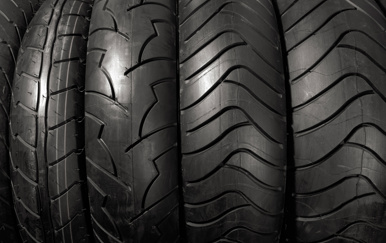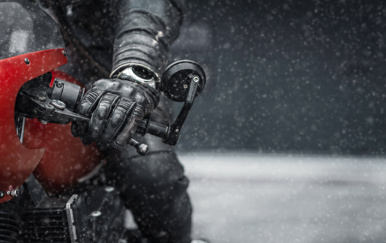Winter months in the UK means there is always the risk of ice and snow giving us a nice surprise. We can be experiencing nice mild weather one day and the next we are greeted by icy cold conditions. Riding through the winter months can be both tricky as well as dangerous.
However, this is not the only reason why people are choosing to put their bikes away for winter, in fact, there are a variety of reasons why people choose to store their motorcycles away for winter such as wanting to switch to four wheels for a much warmer commute, you may dislike riding in the cold, or you might wish to keep your pride and joy out of the wet weather and salted roads to maintain its condition, the list goes on.
Regardless of your reasoning, if you choose to store your two-wheeler away for the winter months, it is essential that you store it away correctly, keeping it protected from both the elements and thieves, as well as helping to prevent any damage, rust, or corrosion.
In this blog, we are going to be running down everything you need to know before storing your motorcycle or scooter away for winter. So without further ado - let’s get into it, shall we?
Chose a safe and secure location to store your bike
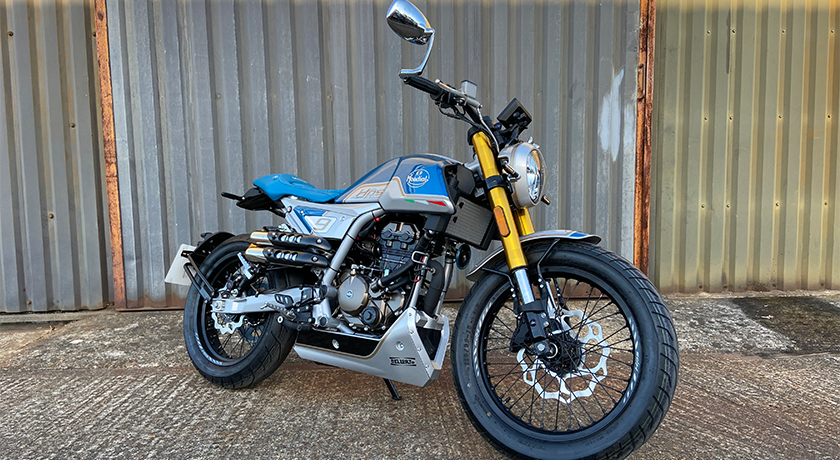
First, when storing your motorbike or scooter over the winter, you will need to consider where you will keep it. There are plenty of options as to where you can store your two-wheeler, such as in a garage, the garden, or the driveway.
Whilst there are plenty of places to store your motorcycle or scooter, the best and most secure place to store your motorcycle is within a garage or indoor storage. Not only are garages a great way of keeping your machine away from the elements but storing your bike in a garage is another way to keep your bike safe from thieves.
Start off with a thorough deep clean
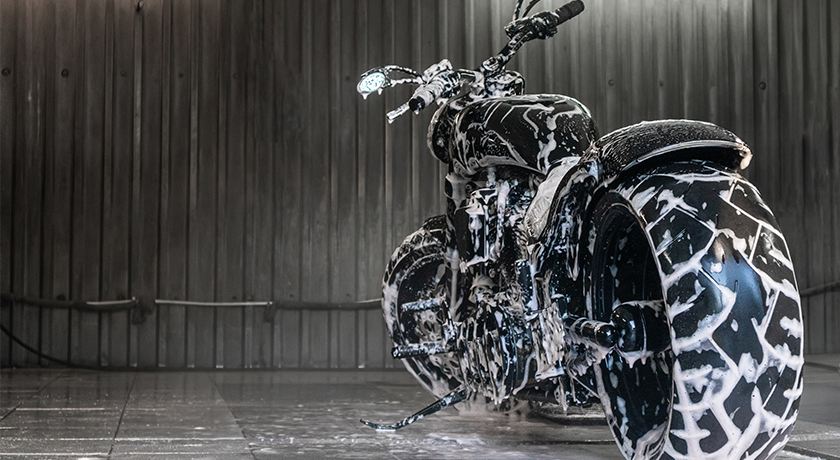
Regardless of how long you’re planning to store your bike, the very first thing you will want to do is give it a deep clean. There is nothing worse than uncovering a dirty bike when you’re ready to get back out on the road!
Once cleaned, it is important to also give your bike a good dry, removing any remaining moisture that can lead to corrosion. For tips on getting your bike squeaky clean, head over to our step by step cleaning guide.
Carry out maintenance tasks and oil changes
Now your machine is squeaky clean and sparkling, now is a good time to complete those maintenance tasks you’ve probably (most definitely) been putting off.
Whether it be replacing the tyres, changing the oil, checking your spark plugs, or changing your motorcycle headlight bulbs, you need to make sure you take care of those neglected jobs. Not only does this ensure your bike will be in the best shape for storage, but it also means you’ll be ready to get back out there as soon as the temperatures rise again.
Get your bike off the ground
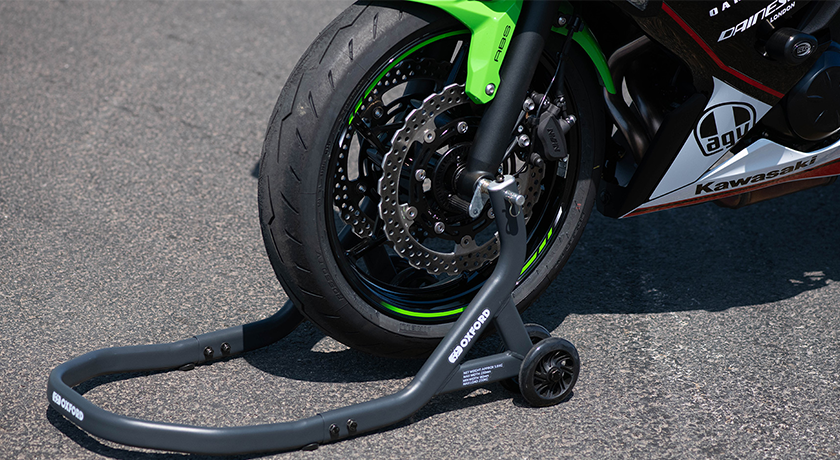
When storing your bike for long periods, it is advised that you raise it off the ground. When a bike is left in contact with the ground when in storage, it can cause flat spots in the tyres, meaning once the weather gets warmer again you will have to replace your tyres before you even think about getting up and going for a ride.
A great way to get your motorcycle off the ground is by using paddock stands, which can also come in handy if you like to carry out small maintenance tasks at home. Alternatively, suppose you do not have a paddock stand or motorcycle lift. In that case, there are plenty of cheaper options available such as over-inflating your tyres (without exceeding any limitations) and moving the bike once every few weeks - you will just need to remember to return them to the correct pressure before you get back to riding again!
Keep your bike covered
Whether you’re storing your motorcycle inside or outside, we would recommend that you put a cover over it.
If you intend to store your bike outside, it would be advisable that you invest in a good quality waterproof cover such as the Oxford Stormex Heavy Duty motorcycle cover. On the other hand, if you’re storing it in a garage, feel free to cover your motorbike with whatever you like - providing it won’t scratch the metalwork. Anything from old blankets to duvets. The main thing is to keep the chill away as much as possible while storing.
Prevent rusting
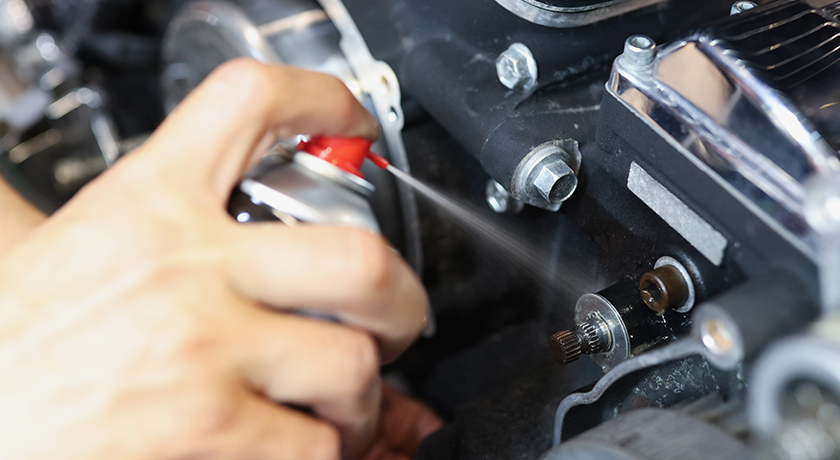
Regardless of how much you try, condensation can and will always find a way to get to your bike. A way of reducing the risk of rusting is by simply spraying on corrosion control or water-dispersing oil (such as ACF-50 or WD40).
It is recommended that you spray onto areas such as the engine case and the wheels, making sure to avoid any contact with the brake discs and calipers. When applying oil to the wheels, the best practice is to spray the oil directly onto a cloth and apply it in that way – making sure to follow the specified instructions within the manufacturers’ manual!
Keep the battery charged
If there’s one thing that we and batteries have in common - it is the fact we don't like the cold.
There is nothing worse than wanting to go out on a spontaneous ride in the Spring and being slowed down by none other than a dead battery. You’ll be pleased to know that you have two options when it comes to keeping your motorcycle battery charged over winter:
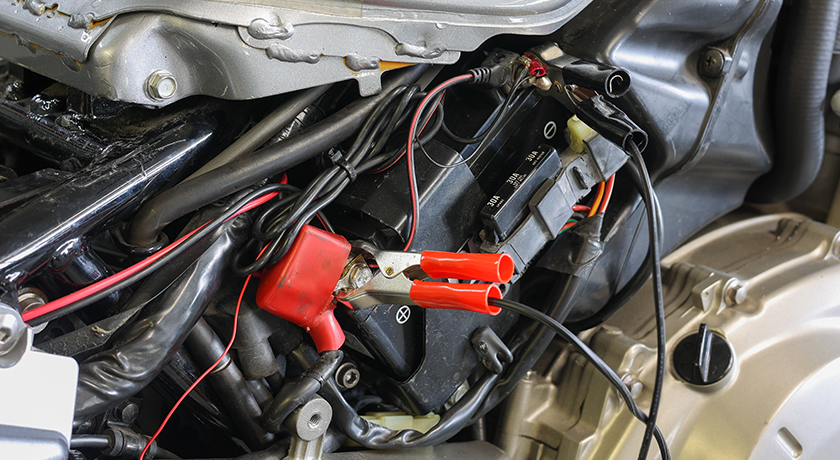
1. Remove the battery and store it somewhere warmer
Number one is to completely remove the battery and place it somewhere warmer such as in your home, a great way to prevent your battery from suffering in the cold either outside or in a garage. However, there are a few problems with this method as you will need to start the engine every few weeks and will need to replace the battery when then is required.
2. Invest in a trickle charger
The second option and probably the best method is to use a trickle charger, such as an Optimate, helping to keep your battery topped up while still connected to your bike. One of the benefits of this method is that trickle chargers typically are relatively inexpensive which means you don’t have to worry about disconnecting and reconnecting the battery.
Top up the fuel tank
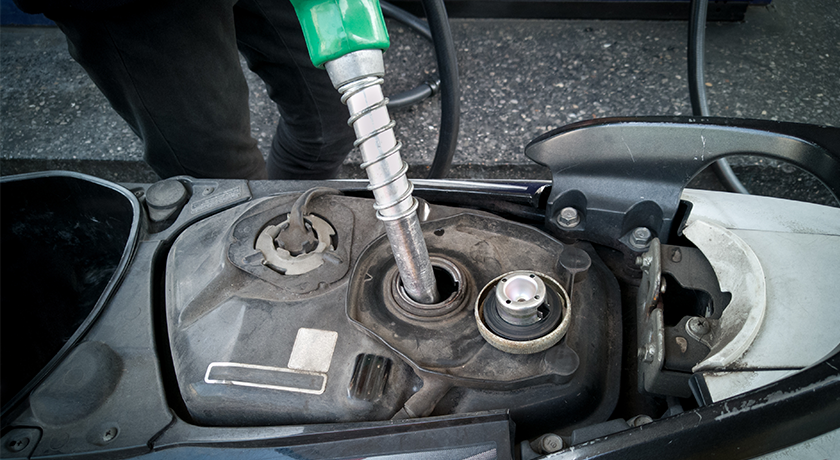
Unless you’re planning to store your bike for an extended period of time, we would recommend filling up before putting your bike into hibernation during the winter months, helping to prevent any rusting on the inside of the tank.
However, it is worth noting that over time, petrol will lose its octane, meaning the fuel sitting in the tank will have a much higher density and can block your injectors. To prevent this from happening, it is advised you start up the motor on your bike once every few weeks.
Sometimes people will drain all the fluids to ‘dry store’ it, but if you keep the fuel in you can add some fuel stabiliser which should keep it good for up to something like two years.It’s also recommended that you put in higher octane fuel (but this isn’t a requirement)!
Block any holes or small gaps up
Unfortunately, whilst your bike is sitting dormant, your small holes and gaps such as your bike's air filter are the perfect places for rodents to settle in and hibernate for the winter. One way in which you can keep your two-wheeler rodent-free is by blocking up any holes such as the airbox intake and exhaust pipes with cloths or spare tea towels you have lying around.
Once the good weather returns, make sure to remember to remove any stuffing from the gaps or holes you’ve closed up before you attempt to turn the bike back on again.
Lock up and Secure your bike
Whether you’re keeping your bike in a garage or outside, we would always recommend securing it with multiple locks. Winter is a prime time for opportunist thieves, especially if you’re working away from home.
If you’re looking for tips on which motorcycle security gear you should invest in, check out our full motorcycle and scooter security guide!
Consider long-term storage options
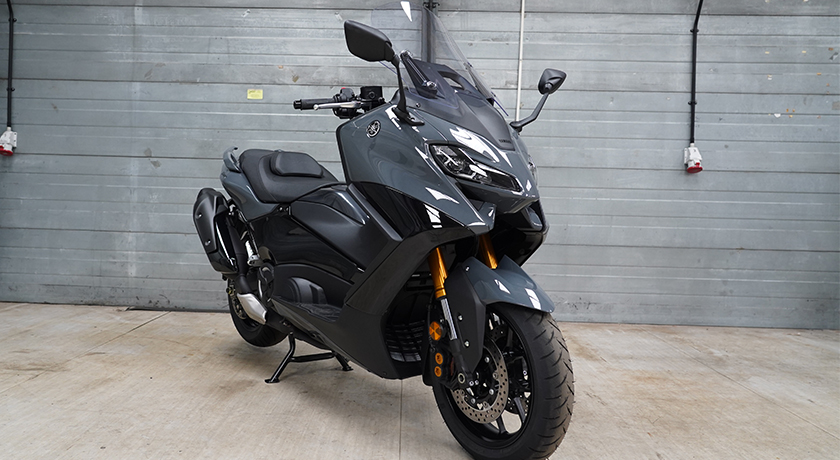
With the colder weather seemingly lasting longer, there are times when you may feel as if you want to store your motorcycle for far longer periods than just the winter months.
If this is the case, you’ll be pleased to know that here at Lexham we can offer you laid-up motorcycle insurance, allowing you to keep your bike insured even when it is off the roads, which is great for protecting you if the unpredictable were to happen such as a fire or theft.
Keep a note of everything you’ve done to your bike
If you’ve blocked up any gaps on your bike, removed the batteries, or perhaps you’ve overinflated your tyres to store your motorcycle for winter, then you’ll want to make sure you reverse any of these adjustments before you set out to ride again.
It is worth keeping a note somewhere of what exactly you have carried out on your bike as failing to do so may result in you potentially causing damage to yourself or your motorbike.
Wanting to keep your motorcycle on the road?
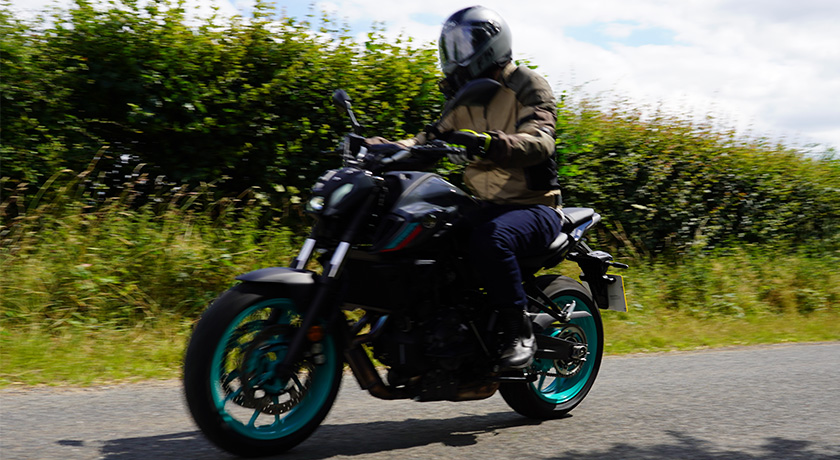
Typically, not every Winter in the UK is as cold and lengthy as we have seen in the past few years, in fact, according to MetOffice we are due to see far warmer and wetter winters in the upcoming years.
If you’d prefer to keep riding this winter, and many winters to come, then there is no real reason why you can’t (unless it is snowing, that is categorically a no-go), providing you make sure to ride within your capabilities and when you feel safe to do so.
To help you out, we have a variety of articles on winter riding such as:
- How to prep your motorbike and ride safely during Winter
- Top Winter Motorcycle Tyres
- Winter Motorcycle & Scooter Gear for Cold Weather Rides
Ready for the winter?
So there you have it, I hope you enjoyed my full rundown on how to store your motorcycle or scooter away for this winter season.
Last but not least, if you have your very own motorcycle you need to insure, make sure to get a motorbike insurance quote direct with Lexham!



